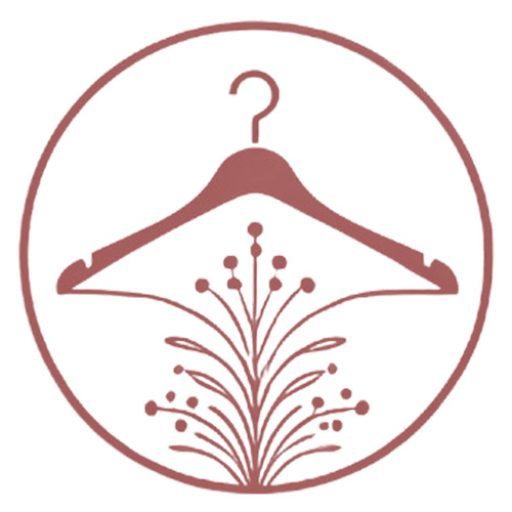Introduction
Few things are as comforting and chic as slipping into a beautifully crafted knitwear piece. Whether it’s a chunky sweater, a sleek knit dress, or a cozy cardigan, knitwear embodies a sense of warmth, style, and versatility. But here’s a fashion challenge that even seasoned stylists enjoy experimenting with: mixing warm and cool tones in knitwear.
Warm tones, like burnt orange, mustard, and terracotta, evoke feelings of coziness and comfort. On the other hand, cool tones, such as icy blue, lavender, and sage, bring a sense of calm and refinement. Combining these contrasting palettes in a single outfit can feel daunting, but when done right, it creates an intriguing, balanced look that’s both modern and timeless.
About the Author and My Trend Boutique
In this guide, we’ll unravel the art of pairing warm and cool tones in knitwear, offering insights into color theory, styling tips, and outfit combinations to help you master this trend with confidence. Let’s explore how to elevate your knitwear game by blending these tones seamlessly.
Foundational Concepts
Understanding Warm and Cool Tones
Before diving into styling tips, it’s essential to understand the basic differences between warm and cool tones:
- Warm Tones: These colors are rooted in yellow, red, and orange undertones. Think rust, mustard, caramel, and coral. They create a sense of energy, warmth, and approachability.
- Cool Tones: These hues are based on blue, green, and purple undertones. Examples include navy, sage, lavender, and icy gray. They are associated with calmness, elegance, and sophistication.
When you mix warm and cool tones, you’re creating a dynamic interplay of contrast and harmony. The key is to ensure balance so that one set of tones doesn’t overpower the other.
Why Mix Warm and Cool Tones?
Mixing warm and cool tones in knitwear allows for greater versatility and creativity in your outfits. Here’s why it works:
- Visual Interest: The contrast between warm and cool colors makes your outfit stand out without relying on bold patterns or prints.
- Seasonal Adaptability: This mix works across seasons, blending fall’s earthy warmth with winter’s frosty coolness or spring’s soft pastels.
- Depth and Balance: Combining warm and cool tones adds dimension to your look, making it feel intentional and sophisticated.
Color Psychology & Emotional Impact
Colors are more than just visual elements — they evoke emotions and set the tone for your outfit. When mixing warm and cool tones in knitwear, it’s worth considering the emotional impact of each:
- Warm Tones: These shades feel inviting and energetic. A burnt orange sweater or mustard cardigan can lift your mood and create a cozy vibe.
- Cool Tones: These hues feel tranquil and polished. A sage green knit or lavender scarf can exude elegance and calm.
By pairing these contrasting tones, you create a balanced outfit that feels approachable yet refined. For example, a mustard-yellow sweater with a navy knit scarf combines the vibrancy of warmth with the sophistication of cool tones.
Personal Style & Body Type Considerations
The beauty of mixing warm and cool tones in knitwear is that it can be tailored to suit your personal style and body type.
Warm vs. Cool Placement
- For Petite Frames: Use lighter cool tones (like icy gray or sage) for your top half to elongate your frame and ground the outfit with warm tones (like caramel or rust) on the bottom.
- For Curvier Figures: Place cool tones on areas you want to downplay and warm tones on areas you’d like to highlight. For example, pair a navy knit sweater with a burnt-orange scarf to draw attention to your face.
- For Taller Frames: Use larger color blocks of warm and cool tones to play with proportions. For instance, layer a chunky lavender cardigan over an ochre turtleneck.
Matching Personal Style
- Minimalist: Opt for subtle contrasts, like a cream knit sweater with sage green trousers or a camel cardigan with a navy scarf.
- Bold and Trendy: Play with high-contrast pairings, such as a rust-orange knit dress with a cobalt blue belt.
- Romantic: Pair soft pastels like blush pink and lavender with warm neutral knits like taupe or oatmeal.
Picture Gallery
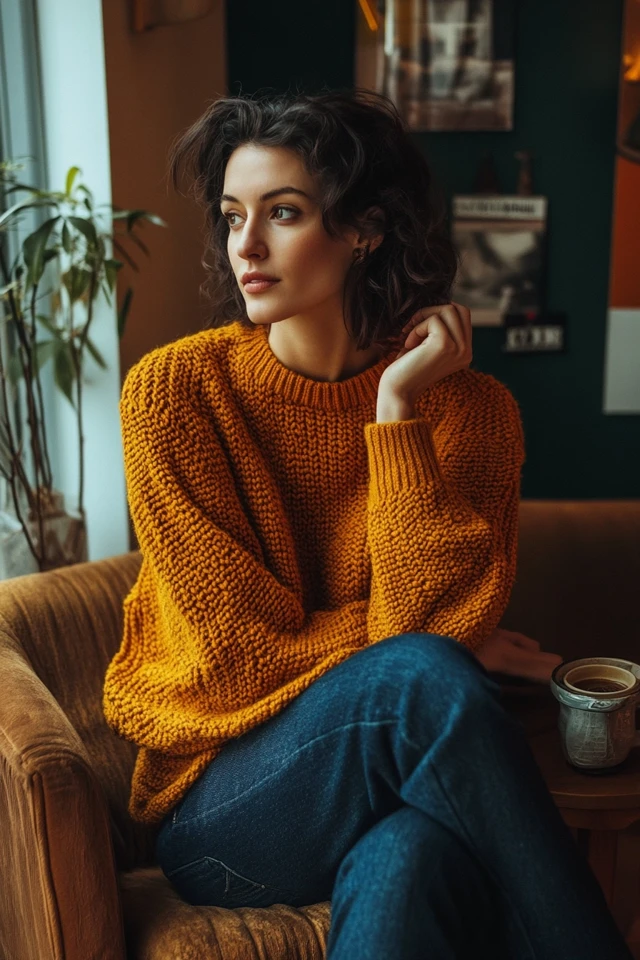
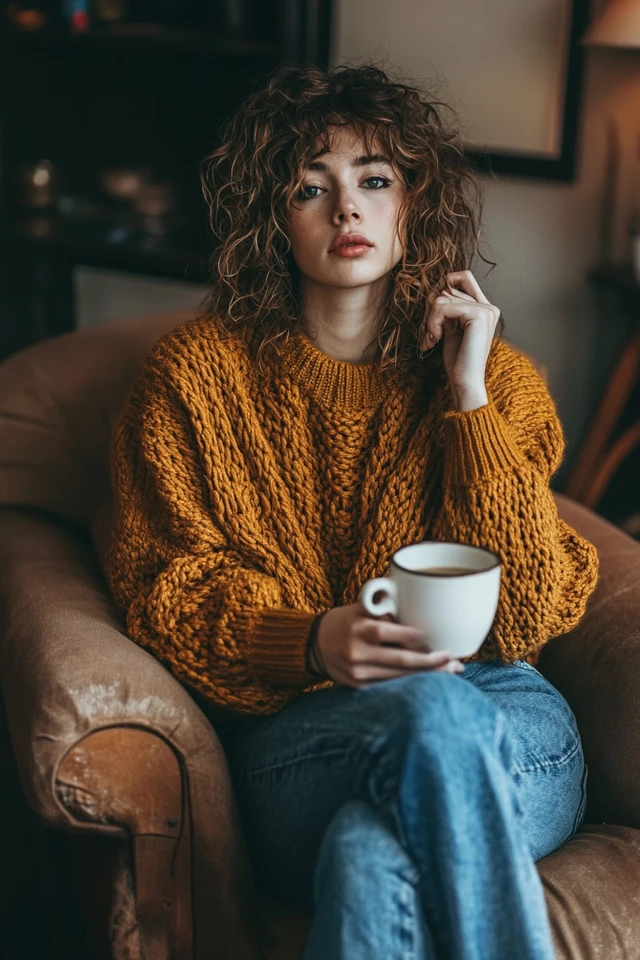

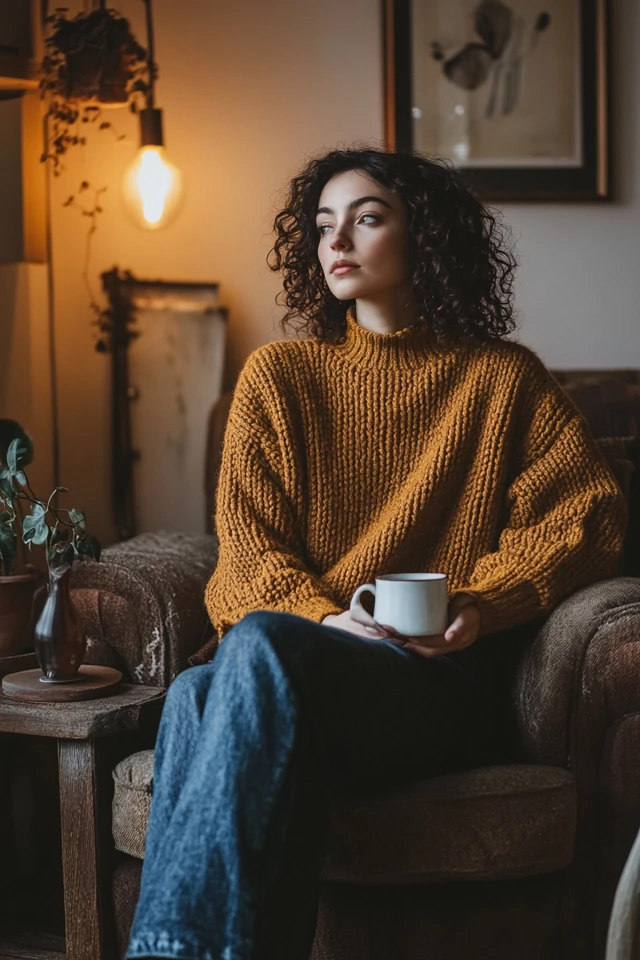
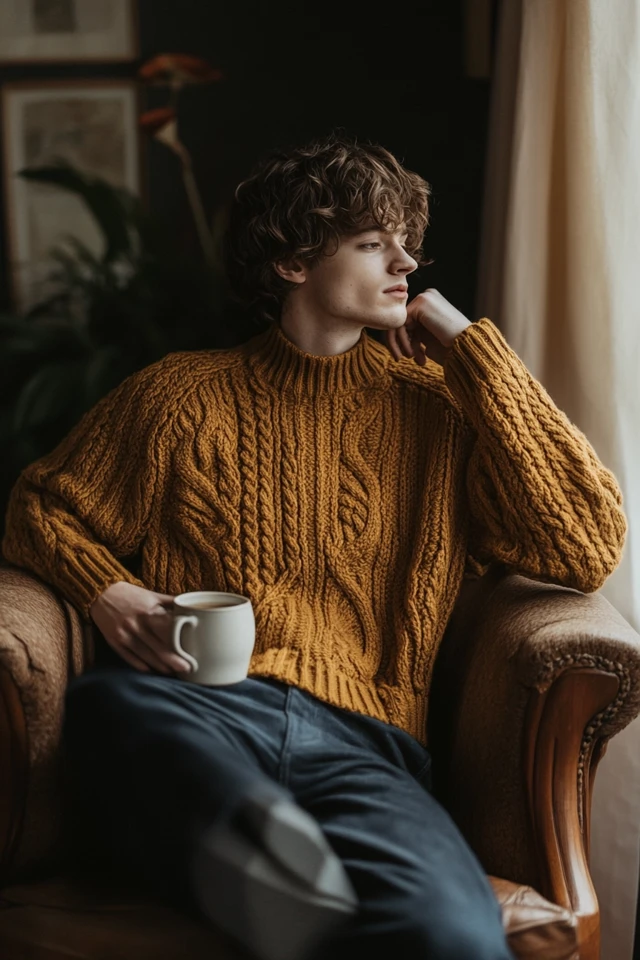


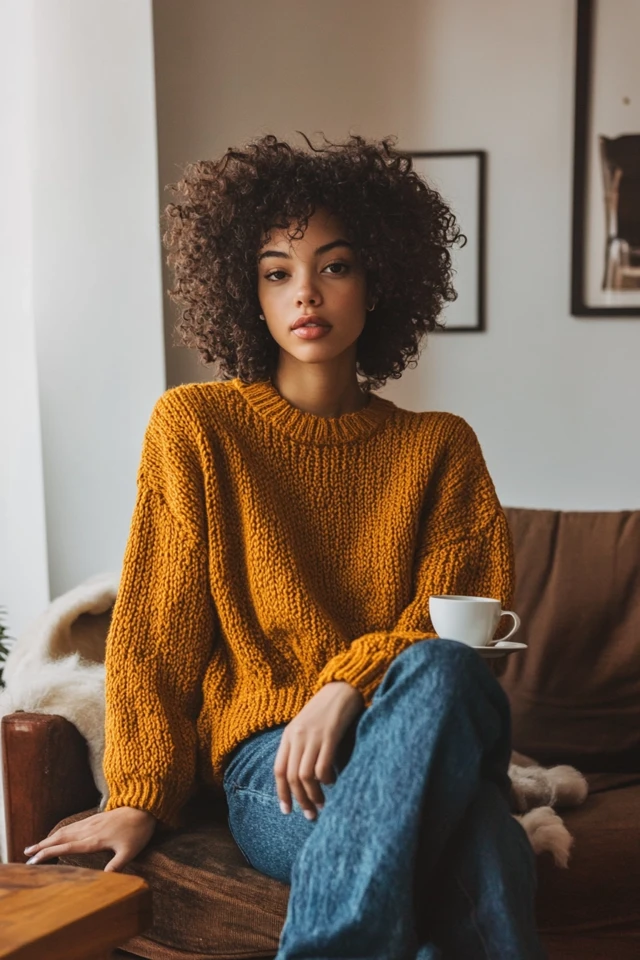
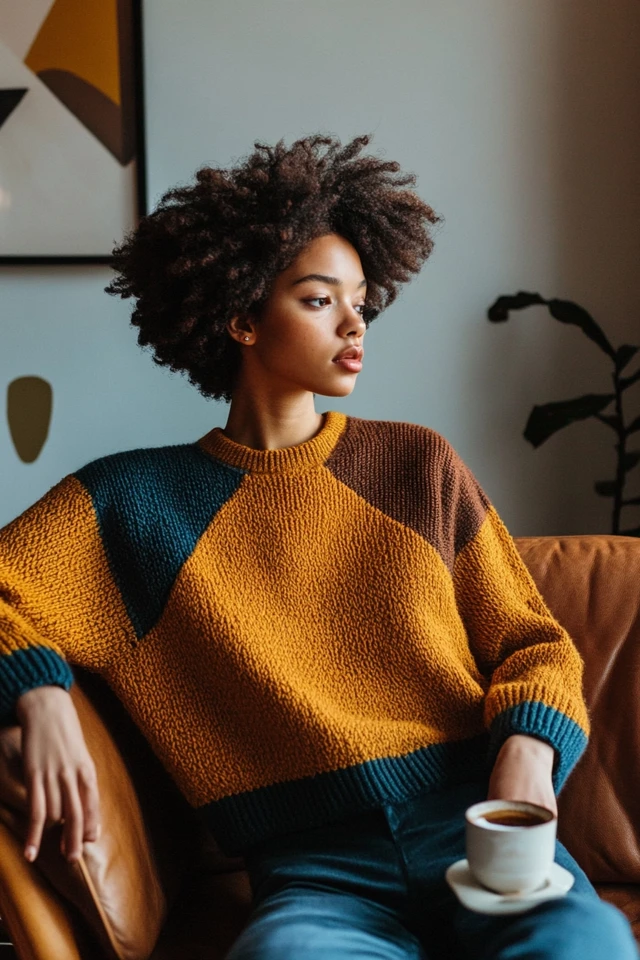
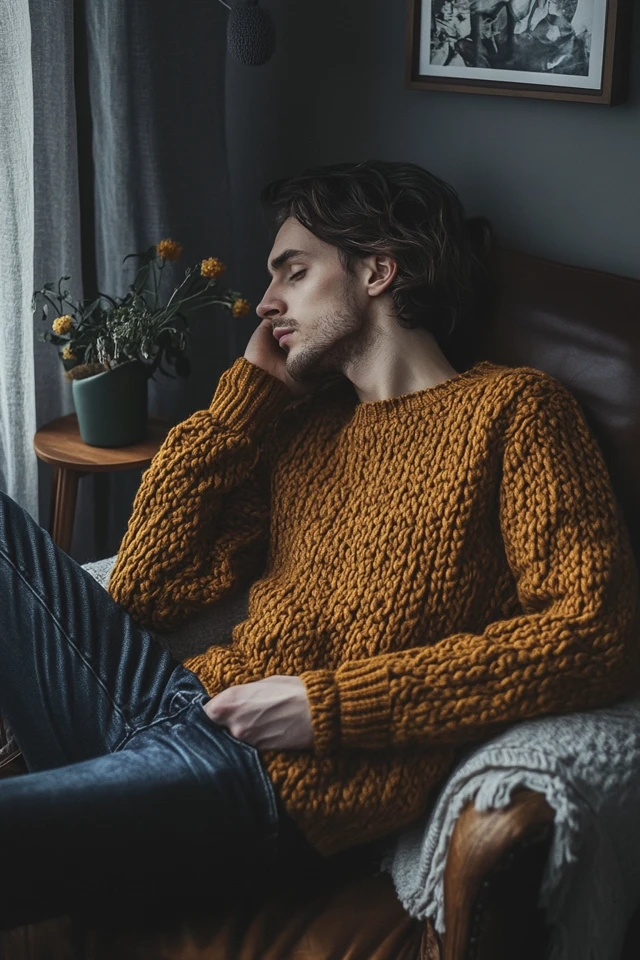
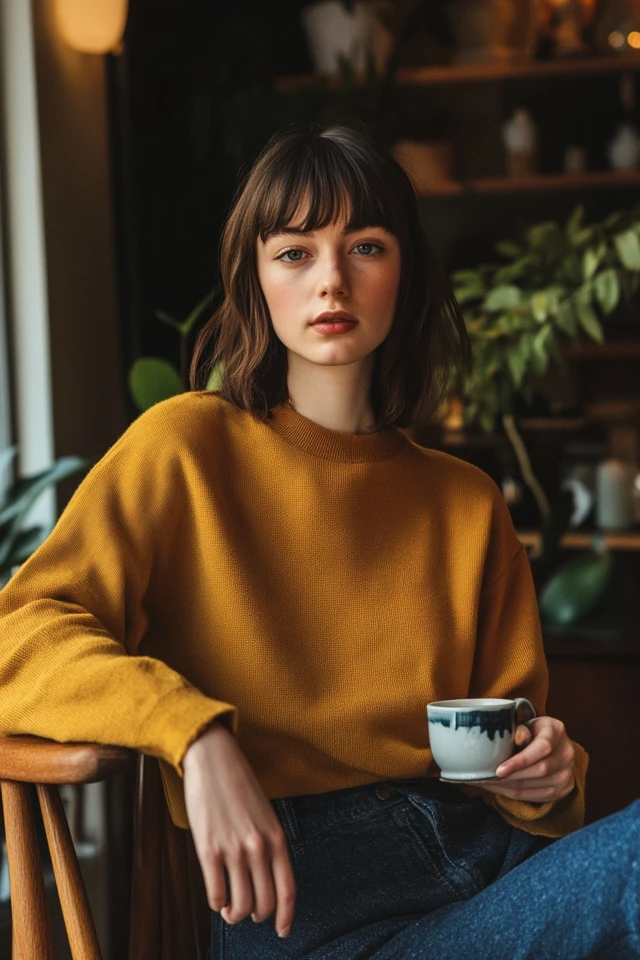
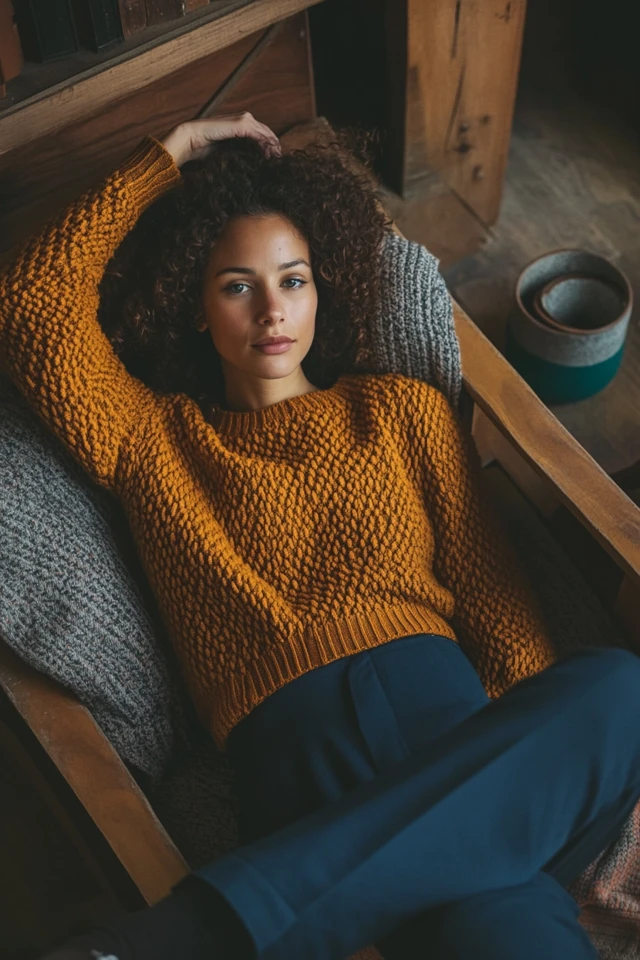
Current Trends & Timeless Classics
Trending Color Combinations
- Rust & Sage: This pairing is perfect for fall and winter, combining the grounded warmth of rust with the fresh coolness of sage green.
- Mustard & Navy: A classic combination that works for everything from casual outfits to professional wear.
- Lavender & Camel: This soft and sophisticated pairing is ideal for spring and adds a touch of femininity to knitwear.
- Blush Pink & Charcoal Gray: Romantic yet modern, this combination balances warmth and coolness beautifully.
Timeless Mixes
- Cream & Olive: A versatile and understated pairing that works for every season.
- Caramel & Steel Blue: A polished and contemporary choice that transitions easily from day to night.
- Burnt Orange & Icy Gray: This high-contrast combo feels fresh yet timeless, perfect for colder months.
Practical Tips & Recommendations
How to Master Mixing Warm and Cool Tones in Knitwear
- Start with Neutrals: Incorporate neutral shades like cream, gray, or beige as a base to bridge the gap between warm and cool tones.
- Layer Strategically: Use layers to balance the color distribution. For example, layer a cool-toned cardigan over a warm-toned sweater or vice versa.
- Add Accessories: Scarves, hats, and gloves are great for introducing a pop of warmth or coolness without overwhelming your outfit.
- Play with Proportions: Pair oversized knits in one tone with fitted pieces in a contrasting tone to create visual harmony.
- Experiment with Textures: Combining different knit textures (like ribbed, cable-knit, or smooth) adds depth and keeps the look cohesive.
FAQs
1. Can warm and cool tones be mixed in one outfit?
Yes! Warm and cool tones complement each other when balanced thoughtfully. Use a neutral base and distribute the colors evenly for a cohesive look.
2. What’s the best way to start mixing these tones if I’m new to the concept?
Start small by pairing a warm accessory (like a scarf or hat) with a cool-toned sweater, or vice versa. Gradually add layers as you gain confidence.
3. Do warm and cool tones work for all seasons?
Absolutely! This combination is seasonless. In warmer months, focus on lighter fabrics and pastel tones, while in colder months, opt for richer hues and heavier knits.
4. Are there any colors that don’t mix well?
Avoid mixing tones that clash too strongly without a neutral buffer. For example, pairing neon orange with icy blue might feel jarring unless balanced with a neutral like cream or gray.
5. Can I use patterns to mix warm and cool tones?
Yes! Patterns like stripes or color-blocked knits are great for incorporating both tones seamlessly. Look for pieces that naturally combine warm and cool shades.
Conclusion
Mixing warm and cool tones in knitwear is an art that brings versatility, depth, and balance to your wardrobe. By experimenting with layers, textures, and accessories, you can create looks that feel polished and intentional while remaining cozy and approachable.
Start with subtle pairings, such as a rust sweater and sage scarf, and work your way up to bolder combinations like mustard and lavender. Remember, fashion is all about self-expression — don’t be afraid to get creative!
What are your favorite warm and cool tone combinations? Share your outfit ideas in the comments or tag us in your looks online. Let’s inspire each other to master this cozy, stylish trend!
